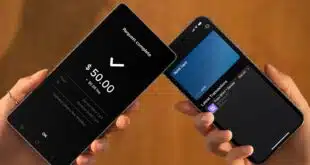Most bankers know that today’s payments are broken. From keeping pace with evolving customer experiences, to navigating the changing regulatory environment, to overcoming competitive threats from nonbanks, many have become so frustrated they are debating whether to abandon some in-house payments channels entirely.
Consumers, too, are becoming frustrated with the state of bank-based payments and are increasingly relying on nonbank apps like Venmo, PayPal, and Cash App. Last year, more than three-quarters of U.S. adults used a payment app, according to the Consumer Financial Protection Bureau.
Among Gen Z, that percentage is even higher, with approximately 85% of consumers aged 18 to 29 using such a service. Transaction volume across all apps in 2022 was approximately $893 billion and is projected to reach $1.6 trillion in the next four years, despite the CFPB’s warning to consumers that funds held in such accounts lack deposit insurance.

Given this, it’s understandable that some banks are considering exiting certain payments channels, especially person-to-person. After all, why risk poor customer experiences that could damage the entire relationship?
But giving up on these channels may actually be more damaging than banks realize. Here’s why:
Community banks pride themselves on the relationships they build with customers and the exceptional service they deliver. Customers are not just numbers. They’re neighbors and friends from the community. These FIs are already the places their communities rely on for holding and growing their money. They should also be the places customers rely on for moving their money every day.
And by ceding ground to third-party apps, banks may be opening themselves up to further risk. For instance, what happens when those providers come after deposit accounts? Banks could be risking more than just a single product. They could be risking the entire customer relationship.
Instead of abandoning payments, banks must go beyond today’s solutions and eliminate the countless disparate modules that so many are saddled with. They can do this by building a universal payments platform, where every kind of money movement is simple, fast, secure, and offered from a single intuitive interface within the bank’s digital-banking channels.
No matter where the money is going, it must all be accessible from this single interface. Customers should only be required to type in who they’re sending it to, how much they’re sending, and when they want to send it.
Consumers expect this level of simplicity. According to a survey from the Federal Reserve, consumers want fast and seamless payment options, and about 70% say having access to enhanced capabilities from their financial institution is an important satisfaction driver.
Steve Jobs famously said that a successful product cannot begin with a marketing campaign or technology. Instead, it must start with the end user and a deep understanding of the customer’s needs. This approach must be applied to payments.
Banks must approach changes from the customers’ perspective, not from a banker’s or technologist’s point of view. Remember, customers do not really care about what’s behind the curtain, such as the delivery rails and restful APIs. What they do care about is whether a payment method is fast, safe, and easy to use.
By being the central place for all money movement, such as car payments, utility bills, or transfers to family members or roommates, banks become a hub for their customers’ financial lives.
Every time a customer moves money, that bank becomes the primary provider for that action. Not only does this increase engagement and stickiness, but it also allows the bank to tap into more opportunities to grow the relationship. With insight into a customer’s payment activity, banks gain a better understanding of their customers and can recommend products and services that touch other parts of their finances. It’s a recipe for real growth and profitability.
Furthermore, by placing themselves at the center of their customers’ lives, they’re supporting their mission to better the communities they serve. It truly becomes a win-win for both the bank and its customers—something nonbank apps can’t do.
It’s time for banks to move past the days of the seven-letter word “bill pay” and approach payments with a universal mindset. By becoming the payments hub for their customers, banks gain much more than just being the place where customers store their money. They become an integral part of their lives.
—Geoff Knapp is chief executive of Allied Payment Network.





